What is Agile Digital Transformation?
Agile digital transformation is a key part of the way modern businesses achieve optimal efficiency, productivity, and cost-effectiveness within internal processes.
Indeed, applying the Agile methodology to transformation is kind of an obvious fit.
As we’ll see today, Agile is a versatile, effective way to reach our transformation goals - and ensure that we actually provide business value in doing so.
This last point is critical.
The reality is that a huge proportion of transformation projects miss deadlines, go over budget, or simply fail to achieve what they set out to do.
Today, we’re going to cover everything you need to know about using the Agile methodology to successfully transform internal processes.
We’ll check out the key principles of Agile, along with the most important benefits and challenges you’ll encounter. We’ll also take a look at some practical examples, as well as how to choose the right tool stack for your projects.
But first, let’s start with the basics.
What is Agile digital transformation?
As the name suggests, Agile digital transformation means using the Agile methodology within digital transformation projects.
To understand what this means, it’s helpful to take a step back and think about more traditional approaches to transformation first.
The traditional approach means using what’s known as a waterfall methodology.
Briefly, this means that projects are structured in a highly rigid, sequential manner. Requirements are gathered up-front and then have very little scope to change as the project progresses.
This might sound logical enough, but it can actually cause some pretty big headaches. Often, your initial expectations of a project aren’t a good reflection of reality. So, we end up locked into a project that isn’t going to provide value.
Agile emerged out of a recognition that waterfall-based methodologies often aren’t well suited to digital projects - particularly software development.
Applying the Agile Methodology to transformation
Agile takes a wholly different approach to structuring projects. Instead of front-loading all planning and requirements-gathering, Agile takes a more cyclical approach, recognizing that facts and requirements change as projects progress.
So, Agile projects are structured in iterations.
This is basically a short period of time in which your team focuses on specific, narrow elements of the wider project.
During each iteration, they will:
- Gather requirements.
- Define user stories.
- Build and test solutions.
- Produce deliverables.
- Gather feedback.
A huge part of the rationale here is that, between iterations, we can apply any learning we’ve encountered. This enables us to respond to unforeseen issues, like project dependencies, changing requirements, delays, budgetary changes, or any other new constraints.
Another benefit of this is that we can release features more gradually. So, rather than waiting for an entire project to be completed, we can often release individual features or sub-modules as and when they are ready.
Agile digital transformation also typically gives end users a greater degree of ownership over solutions. One of Agile’s core precepts is that user feedback is gathered on a regular, continuous basis.
This greatly enhances our ability to deliver projects that actually deliver value and offer improvements to our internal processes.
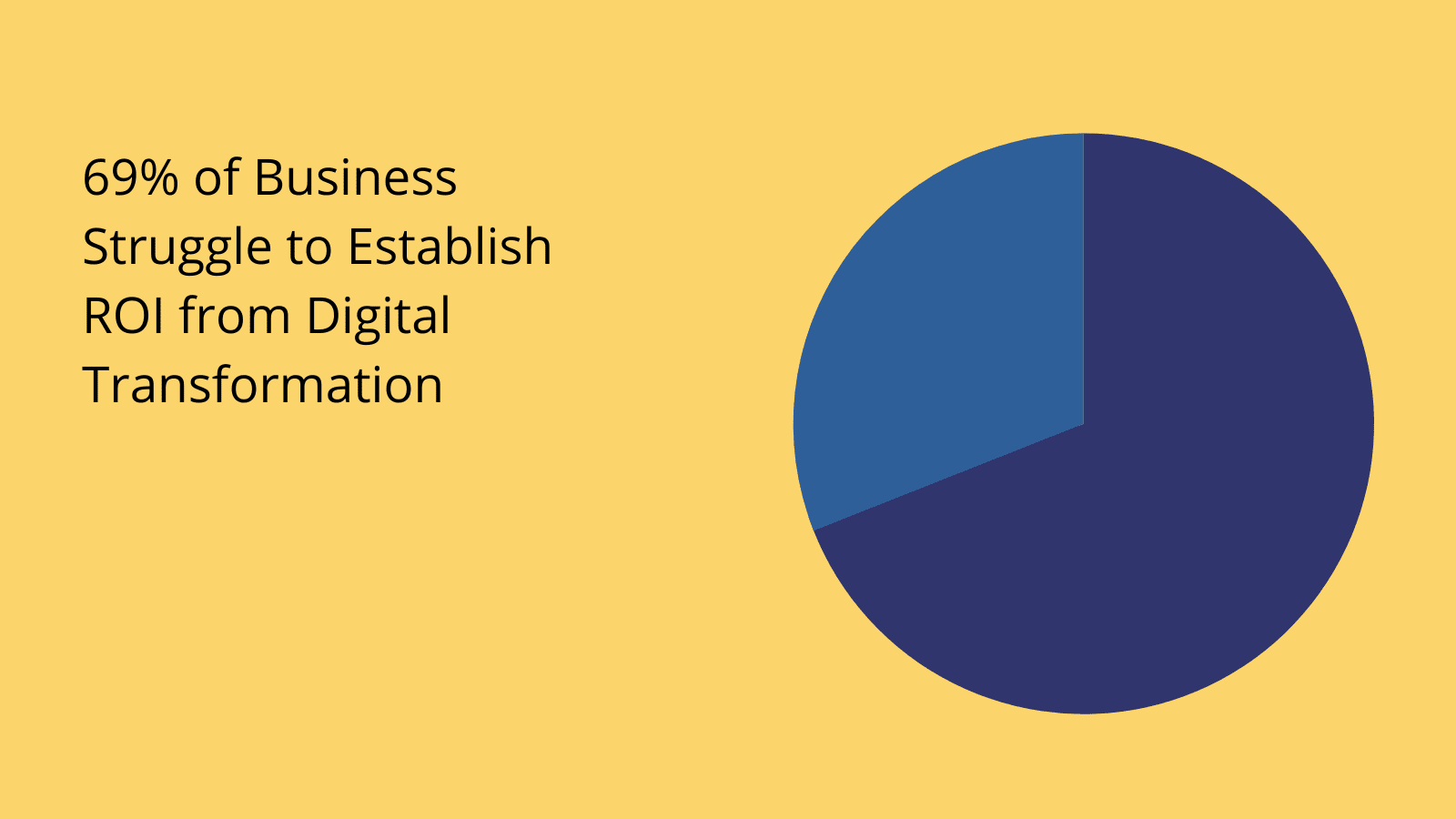
5 principles of Agile transformation
Agile digital transformation - like the Agile methodology more broadly - is built on a total shift in the way we think about software development.
Specifically, it’s built around five core principles for creating user-centric solutions.
Let’s take a look at what these are.
1. Adopting a vision for digital transformation
One of the core elements of any successful transformation project is alignment between technology and your strategic goals. You can have the most advanced solutions in the world, but they’re worth very little if they don’t square with what your business needs to achieve.
As such, it’s imperative that you have a clear picture of the why behind your transformation efforts.
Building on this, we also need a clear framework for measuring the impact of our solutions and the progress we’re making toward their underlying goals.
Ultimately, this is a question of operationalization.
We must have clear, measurable targets - alongside defined time frames for when we expect to achieve them. In turn, this facilitates continuous learning and ongoing improvement within our processes.
2. Data-driven decision-making
Agile digital transformation is heavily focused on data. In practice, there are two distinct levels to this.
So, on the one hand, access to effective data helps to inform our targets and strategy around transformation. The objective here is to home in on the aspects of our business that offer the greatest potential returns through transformation.
On the other hand, transformation outwardly seeks to improve access to data with our organization - and therefore our colleague’s ability to leverage insights in their day to day activities.
Emphasizing data-driven decisions requires us to think both in terms of how data can aid our transformation efforts and how we can facilitate better access to information more broadly.
3. Security
Security is at the center of the Agile methodology. It’s imperative that - as we expedite and expand transformation efforts - we don’t compromise on security.
This principle can feed a whole range of different strategies in practice.
Of course, one of the most ubiquitous approaches today is cloud computing. There are also a range of DevOps, development, authentication, access control, infrastructure, and other security tools that we can integrate into our transformation strategy.
Another way of framing this is prioritizing security by design- rather than as a separate, later consideration.
The aim is to design our solutions in a manner that allows us to monitor, respond to, and prevent threats in real-time.
4. Emphasis on providing value to end-users
Agile digital transformation prioritizes people over procedures. As we’ve seen already, one of the central goals of the Agile methodology is to create solutions that create genuine user value, rather than rigidly adhering to initial requirements.
For internal processes, this largely relates to creating more streamlined ways of carrying out daily tasks.
Continuously seeking out feedback from stakeholders at all levels of your organization contributes massively to this.
Within every iteration, Agile digital transformation creates opportunities for colleagues to express their thoughts and concerns, enabling your operations and technical teams to create solutions that genuinely solve core business problems.
5. Agility in the face of change
Agile digital transformation also prioritizes a high degree of flexibility and adaptability to change. This is probably the most central Agile principle - it’s even where the methodology gets its name.
The idea is that - in any kind of software project - some degree of change is inevitable.
Requirements evolve, your initial hunches might not work, or projects can go off track.
Agility is your business’s ability to meet these challenges. We can apply this at an operational, cultural, and technical level.
So, our processes, choice of tools, and organizational norms can all make a huge impact on our ability to respond to unforeseen circumstances.
Benefits of the Agile approach
To some extent, we’ve already touched on many of the core benefits of Agile digital transformation over waterfall-based methodologies. Even still, it’s worth spelling these out a little bit more explicitly.
With that in mind, let’s check out the core benefits of applying Agile thinking to digital transformation projects.
These include highly project-specific things as well as much broader, business-level benefits.
Here’s what you need to know.
Cost reduction
As always, we can start by thinking about your bottom line. The first element of this is the cost of transformation. Of course, it’s very hard to generalize here, given the variety of processes you might be dealing with - and the state they could begin from.
Now, it’s important to note here that Agile isn’t invariably cheaper than waterfall-based digital transformation. There are just too many variables to make that kind of sweeping statement.
However, it can be - and often is the more cost-effective way to reach the same results.
The really important point here is the difference in sunk costs between the two approaches. With an iterative, comparative approach, there’s a significantly reduced risk that we’ll waste time and resources on a solution that isn’t fit for purpose.
Similarly, it’s often much easier to realistically budget for Agile digital transformation projects - compared to traditional approaches, where we’re acting on much more limited and inaccurate information.
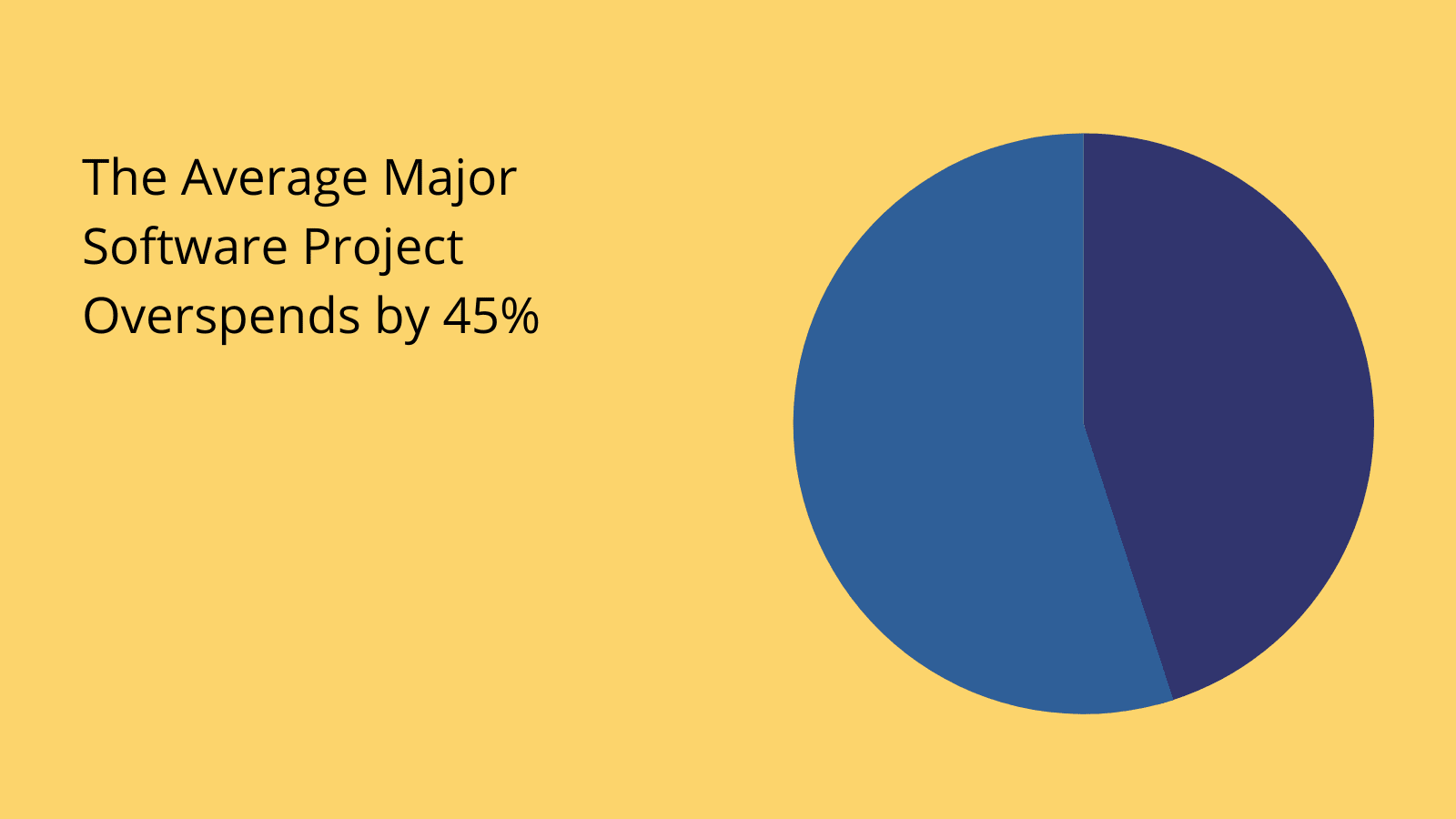
(McKinsey )
Profitability
Then there’s the other side of the coin. That is, the return we see from transformation projects. We can generalize a little bit more here than with costs, but it’s still not entirely cut and dry.
Typically though, Agile digital transformation projects are going to offer superior results - at least for most applications.
The crux of this is that we’re vastly more likely to achieve our underlying goals with an iterative approach than we are by front-loading requirements gathering and project planning.
Whether this is efficiency savings, improved accuracy, repeatability, security, or process adherence, Agile digital transformation provides a reliable framework for creating solutions to enhance internal operations.
Adaptability
Agile businesses can more easily respond to a changing environment. Consider that software projects often take months, if not years. Within a waterfall methodology for digital transformation, this can create big problems.
Say you created rigid requirements for a project that was going to take two years to complete. Just imagine how much could change in this time - across new technologies, emerging threats, or simply changes within your organization.
The solutions you think you need today will almost inevitably be wildly different from the ones you actually need just a couple of years down the line.
This also applies once our transformation solutions are live. Agility is also a massive boon when it comes to shipping changes, patch management, or simply maintaining solutions.
Delivery timelines
Another huge bonus of Agile digital transformation is that we can get solutions online much more quickly - or at least, parts of them.
See, with any kind of iterative development, we don’t necessarily have to wait until the whole project is completed before pushing anything live.
Rather, assuming that they’re not dependent on other elements of the project that we still need to develop, we can push individual modules live as and when they’re ready.
This means that we can unlock the dividends of transformation sooner - as well as making it more likely that our eventual solutions will be fit for purpose, as we’ve already seen.
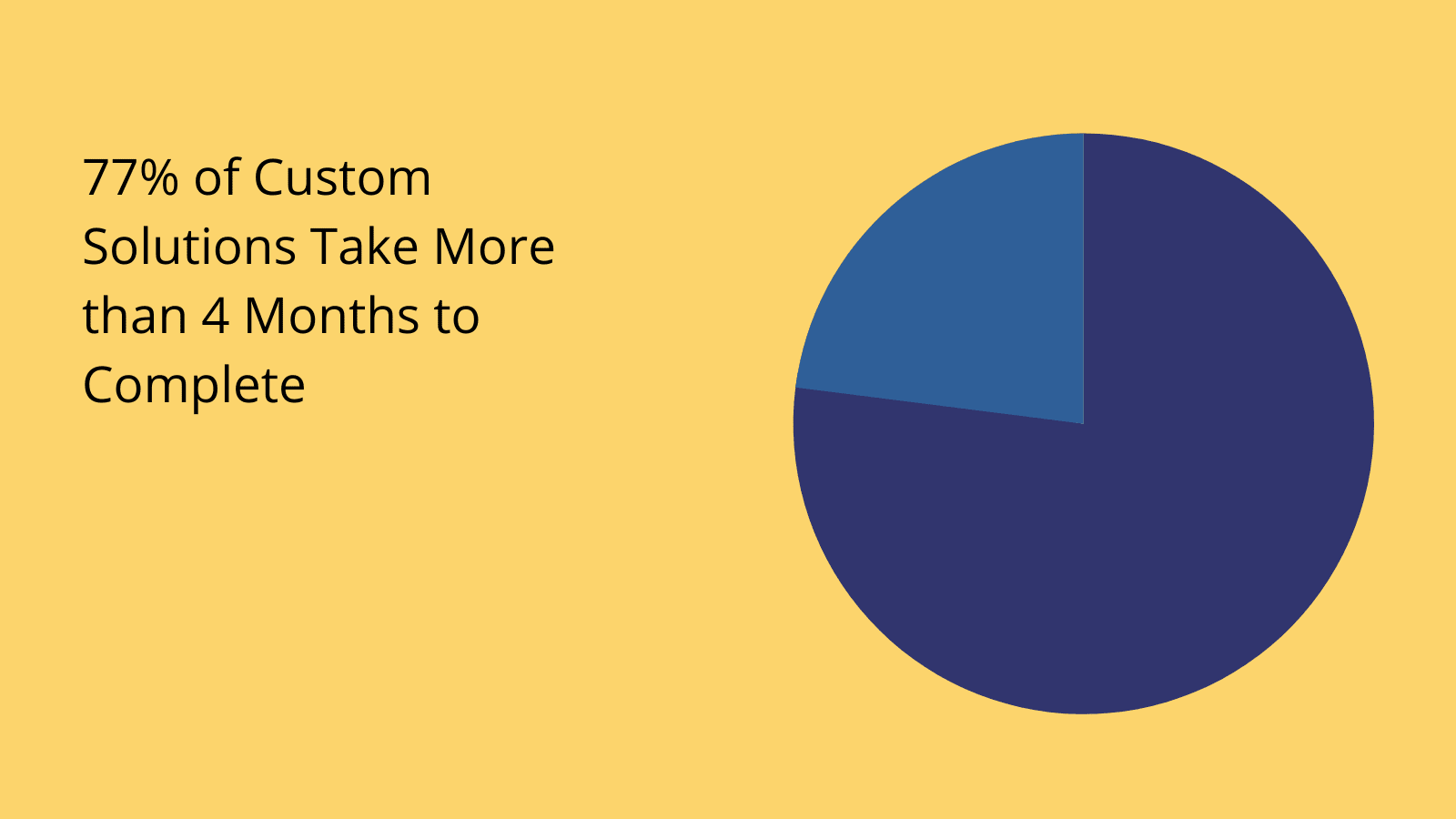
(GoodFirms )
Scalability
Agile digital transformation also emphasizes scalability - in both the horizontal and vertical planes. With cyclical, iterative development processes, we’re in a much better position to add new features when it becomes clear that they’re required.
Again, this applies both during projects and after solutions have been deployed.
We can also point to the fact that Agile makes it much easier to identify potential pinch points - or other specific project elements where scalability might be a priority.
This stems from the fact that we more regularly seek out feedback from a wider array of stakeholders.
This includes our infrastructure team, ops department, end users, customer service agents, or any other relevant internal teams. As such, we can much more accurately predict our future needs in terms of capacity, performance, and functionality alike.
Enhanced deliverables
Finally, Agile digital transformation will typically yield better results - all else being equal. We’ve given a partial explanation of how this works already.
That is, since we’re able to take account of new information as the project progresses, we’re in a much better position to output solutions that actually provide business value - rather than blindly following project requirements that could be months or even years out of date.
On top of this, Agile transformation allows us to foster a greater sense of user ownership within our projects.
In turn, this makes our colleagues much more amenable to change, ensuring that we don’t encounter any undue project blockers.
Challenges for Agile digital transformation
Of course, Agile digital transformation is not without its challenges. Indeed, there’s a reason that many businesses still opt for traditional, waterfall-based projects.
Let’s consider some of the potential downsides and scenarios where you might opt for a more traditional approach instead.
These include:
- Costs - Agile projects can also end up costing more, since we’re spending more time on feedback and reviews. Again, there’s no hard-and-fast rule.
- Predictability - For some use cases, it’s vital that we stick rigidly to front-loaded requirements, so Agile isn’t suitable.
- Knowledge resources - Agile project management requires specialist skills and knowledge of the methodology.
- Shifting methodologies - We can often encounter issues when adopting Agile digital transformation for the first time, including reluctance from internal stakeholders to change how things are done.
Of course, none of these issues are necessarily insurmountable.
Rather, what’s important is that we’re conscious of these potential drawbacks when deciding on the right methodology for our specific projects.
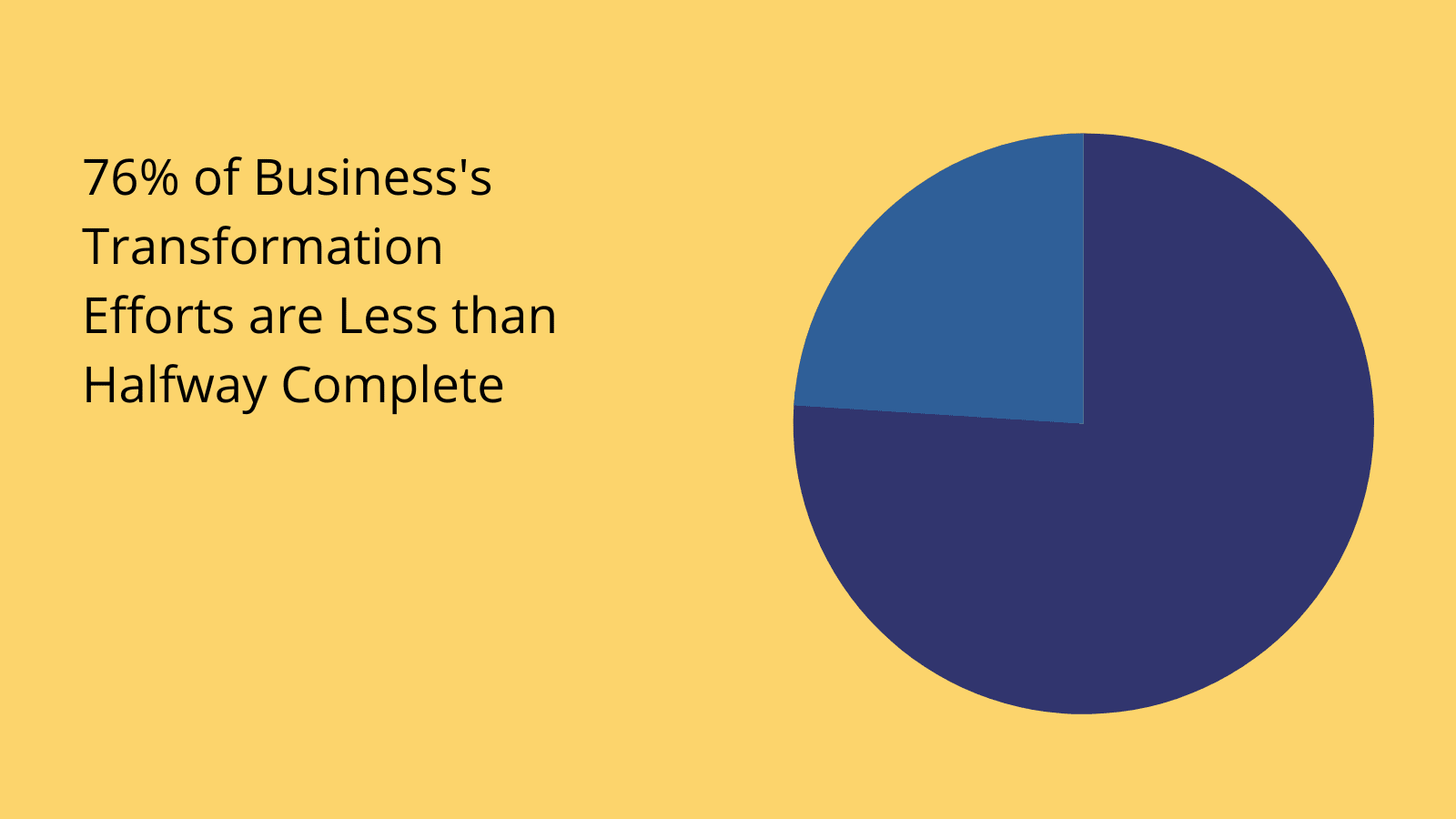
(Gartner )
Agile digital transformation in practice
So, let’s think about some real-world scenarios. Say we wanted to digitalize our processes for recruiting and onboarding new talent. This is a good candidate for illustrating Agile, since it’s an application that basically everyone has experience with, no matter their role.
Our first step is to create an initial roadmap for what we want to achieve through digital transformation - and how we’re going to achieve it.
With this in place, we can begin to divide it into iterations - say four-week blocks of work.
In all likelihood, we’d want to start with the core of our transformation solutions - like creating an effective, scalable data layer, before moving on to the foundation of our most urgent functionality - perhaps a jobs portal or intranet platform for new recruits.
Then, with each successive iteration we can add new functionality, based on what’s the most pressing priority.
This approach means that we can get a viable solution online as quickly as possible, which we can then flesh out with more niche or nice-to-have features - rather than needing to wait for these to be completed before we can ship the more central stuff.
Choosing tools for Agile transformation
Of course, with any project management methodology, it’s also important to have a grasp of the kinds of tools we’ll need to be most effective.
Agile digital transformation is no exception - so let’s quickly run through a few types of tools you’ll want to know about.
The first is actual project management tools. Agile has become so ubiquitous over the last decade or so that plenty of vendors offer solutions specifically aimed at managing workloads and tasks within the methodology.
We can also think about the kinds of tools that are gaining the most traction in the IT ops space more broadly.
The biggest trend here is the shift towards low-code development - both for supporting traditional development tools and replacing them entirely within certain application projects.
This can equally mean enabling overstretched developers to perform common tasks more quickly or empowering non-technical colleagues to build solutions for themselves.
Check out our guide to digital transformation platforms to learn more.
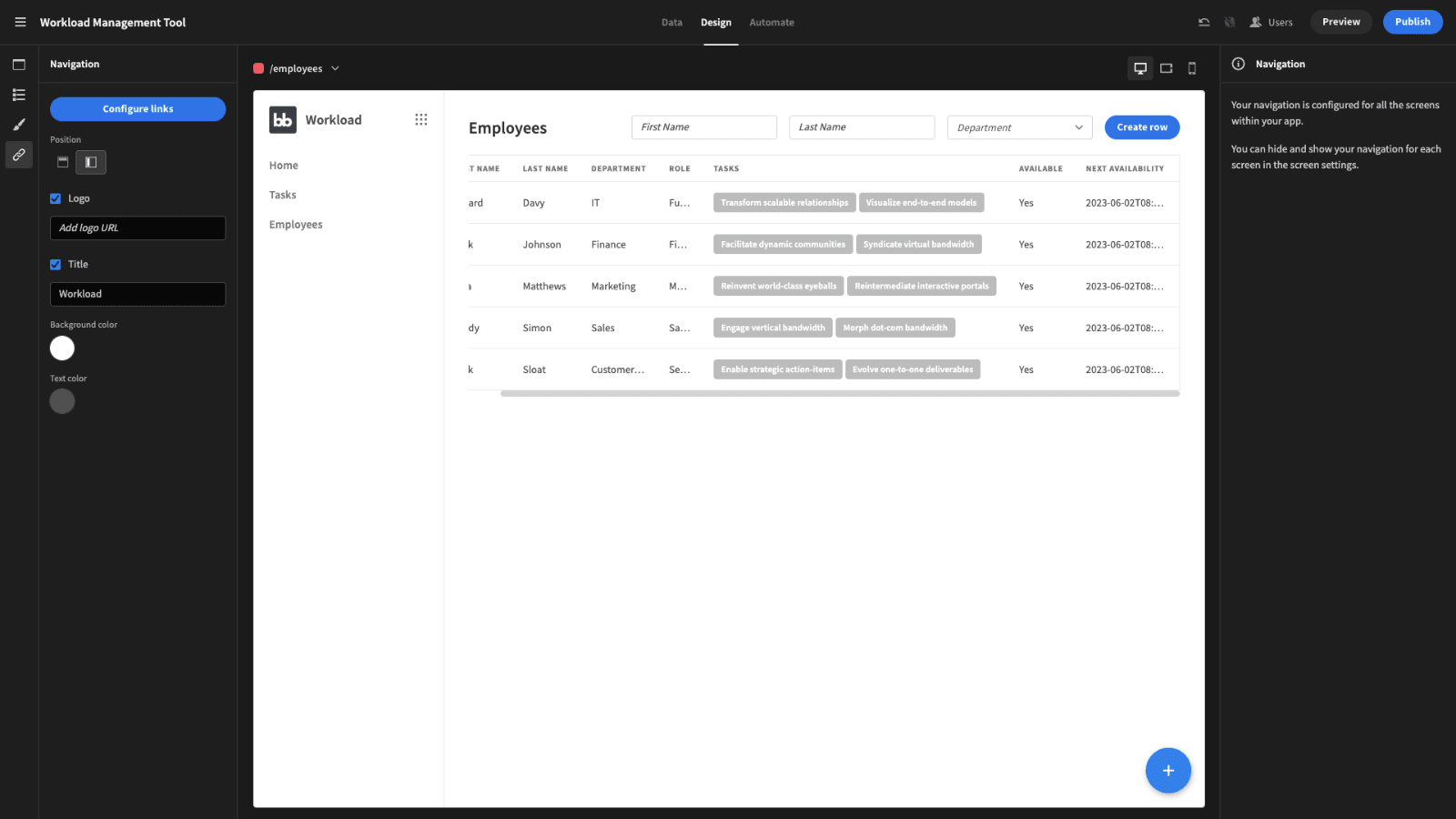
Transform internal processes with Budibase
At Budibase, our mission is to help teams turn data into action. Our platform offers best-in-class developer experiences and extensibility.
Here’s why thousands of businesses around the world choose Budibase to transform all sorts of internal processes.
Our open-source, low-code platform
Budibase is the fast, easy way to build professional web apps. With intuitive design tools, autogenerated screens, custom plug-ins, and much more, there’s never been a better way to create custom solutions at speed.
Check out our features overview to learn more.
External data support
Budibase offers best-in-class connectivity for external data sources. We offer dedicated connectors for SQL, Postgres, Airtable, Google Sheets, S3, Oracle, Couch, Mongo, Arango, REST API, and more.
We also offer our own built-in database, with support for relational data and CSV uploads.
Optional self-hosting
Enterprises and security-conscious organizations love Budibase for the power to host solutions on their own infrastructure. Self-host with Kubernetes, Docker, Digital Ocean, and more.
We also offer our own cloud-based hosting. Check out our pricing page to learn more about both options.
Low-code automations
Budibase makes automating workflows a breeze. Our platform features an intuitive, flow-based automation builder with a whole range of built-in triggers and actions.
You can even leverage external app events using Zapier, Webhooks, or REST.
Role-base access control
Perfectly combine security and user experiences. Budibase offers flexible built-in RBAC. Assign users to roles, and grant permissions at the level of data sources, automations, queries, app screens, or individual UI elements.
We also offer free SSO through OAuth and OpenID.
Custom plug-ins
Budibase is the clear leader for extensibility. Build your own automation blocks, data sources, and UI components - and ship them across all of your apps using our dedicated CLI tools.
Check out our plug-ins docs to learn more.
50+ free application templates
Budibase is the ideal solution for creating professional web applications in a fraction of the time. We’ve even created more than fifty free, deployment-ready, and fully customizable app templates .
Sign up to Budibase today to start building tools the fast, easy way.